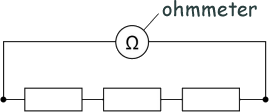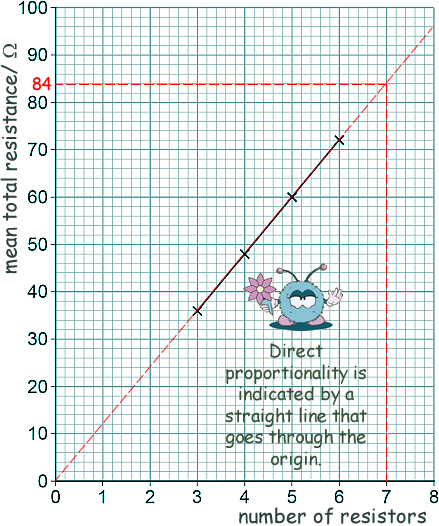GCSE Standard Questions: Electric Circuits Q7. Indie investigated how the total resistance of identical resistors connected in series varied with the number of resistors. He used an ohmmeter to measure the total resistance of the resistors. This diagram shows the Indie's circuit with three resistors. He repeated each reading of resistance three times.
This table shows Indie's results for three resistors in series.
(a) Calculate the mean resistance of one resistor. 36.0 Ω ÷ 3 [2 marks] (b) What was the resolution of the ohmmeter the student used? 0.1 Ω [1 mark] (c) How do the results show that the student's measurements were precise? The measurements are grouped closely together. [1 mark] (d) Indie shows his results on a graph.
[1 mark]
12.0 Ω
[1 mark] (e) Some resistors are connected in series with a battery. When more resistors are added in series, the total resistance increases. Choose answers from the box to complete the following sentences. Each answer may be used once, more than once or not at all.
[2 marks] (Total 8 marks) |
Follow me...
|








